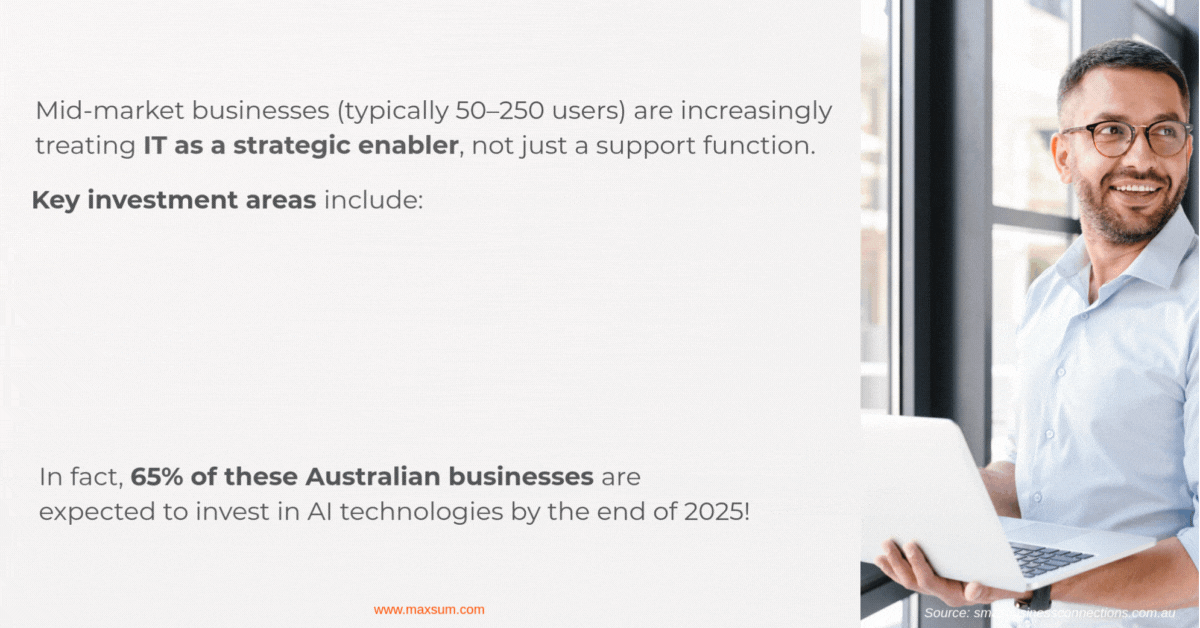When business conditions are tough, your technology must stand up and deliver! Here’s how the winners right now are making this happen.
Australia’s economy grew by a meagre 0.1% in the June 2025 quarter, driving annualised growth down to 1.1%, leaving economic performance trending well below expectations. GDP per capita declined for the tenth time in the last twelve quarters, marking the longest stretch of per capita economic contraction in modern Australian history! Technically, we’re not in a recession, but for many consumers and businesses it certainly feels like one!
While the experts have started calling this Australia’s “personal recession”, on the business front, tough conditions have translated into subdued demand, longer sales cycles, and delayed commit timeframes. Businesses are working hard, driving activity and pursuing targets with the same vigour, but many are just not seeing the same results.
Businesses under pressure, technology on the chopping block
When performance falls short of forecasts, savvy businesses are usually quick to react by correcting their course with adjustments, cut backs, cost cuts, and delaying investment or spending. But as performance shortfalls start to become a trend, pushing these reactive levers too hard, too far and too often only heightens other risk factors rather than delivering any real reward.
Despite Australia’s slow market conditions right now, there are smart busineses that are gaining ground. However these businesses are not just reacting harder – cutting deeper, delaying longer; they’re leading the charge to try something different – a new strategic direction they can pivot to. While some budget tightening may occur in non-essential areas, mid-sized businesses are doubling down on technology that drives efficiency, resilience, and competitive advantage. Here’s where businesses bucking economic trends are looking for wins.
- They’re consolidating and doing more with the systems and investments they already have
- They’re doubling down on their existing sources of business intelligence
- They’re looking for new correlations across their product and service project data, client data, billing trends, delivery metrics
- And they’re looking for new ways to surface these insights and turn them into sources of clarity that inform changes or pathways forward.
How? By getting business and technology into the room, getting them aligned on priorities and playing to their strengths, and then leading them through to deliver the goods.
The story of a business with too much data, not enough profit and no clear direction
Tales from the field…
A well-established professional services firm had years of success behind it, but by late-2024, its leadership team could see and feel the market forces changing. As the first ripples showed up on the horizon, instead of rushing to batten down the hatches, they decided to take stock – of what they have and know, hidden in their own data.
This is a business that was swimming in data. Years of unstructured information had accumulated across the management, delivery, sales, and finance arms of the business. They had dashboards and reports, but regular reporting hadn’t stopped their sales from stalling. What were they missing?
The insights were eye-opening: with expert guidance, some tough conversations and some deep data rework, this business found previously unseen trends and triggers in client engagement, service schedules and waste that were just “accepted” because the revenue targets were being met overall. Hidden in plain site were real opportunities for early proactive intervention before a deal was lost; indicates of how and when customer-sales expectations fall out of alignment, when a relationship was deteriorating, or an opportunity need to be reframed or re-scoped to save the day? And yet none of this showed up in reports, dashboards or even got discussed day-to-day…
What started as a reporting review evolved into a strategic refocus on realigning client needs, timing and priorities, and using new types of data to inform decisions daily, rather than just report on them at quarterly wrap-up time.
While others around them are stalling, this firm is gaining ground – growing sales, improving retention, and actively taking more share in a market where many are focused on survival.
The clear takeaway? They didn’t cut-back or over-spend to correct; they cut-through and re-calibrated.
How to Keep Calm, Cut Through & Re-Calibrate
If work is still getting done but revenue is lagging and profit is harder to retain, the question isn’t whether you’re working hard enough, or even smart enough. It’s a sign that something in your market has changed, and it’s a call to seek out a fresh set of levers you can use to clear a path forward.
Technology can help you do this, but it’s the kind of conversation that needs to be grounded in and driven by your business. Maxsum gets this. We work with mid-sized Australian firms who understand that technology is not a solution in itself, but an opportunity and a catalyst for business change, growth and success, even when times are tough.
Let’s have a business conversation about how and where to double-down on tech to drive success.



